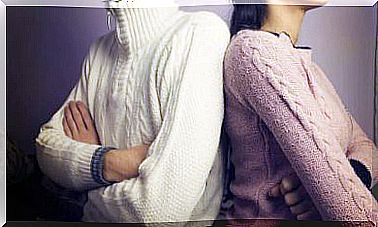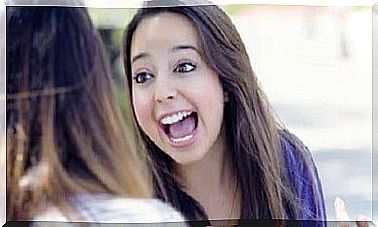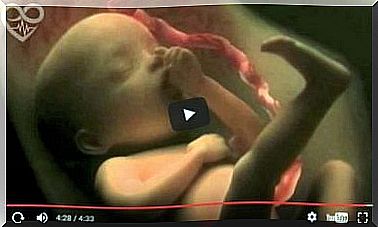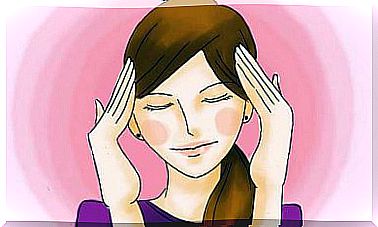Alien Hand Syndrome
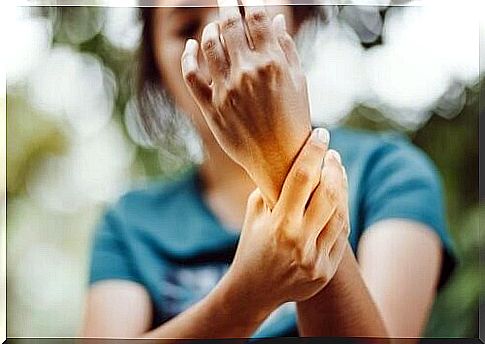
Alien Hand Syndrome (SMA) is a rare neurological disorder. It is, however, important when we consider the degree of disability it can produce in the patient.
Body experience (in a global sense) is a complex process that requires the integration of multiple sensory signals. An anomaly in this integration can therefore give rise to neurological disorders of a different nature. Examples include phantom limb syndrome or the duplication of various parts of the body. (1)
History of alien hand syndrome
In 1908 Goldstein described the case of a woman who had suffered a stroke in the right hemisphere. After the cardiovascular accident, the patient had begun to complain of weakness in her left leg, as well as a strange motor disturbance in her left arm. The woman felt that her left hand did not belong to her.
In 1944 Akelaitis reported the clinical case of two patients whose corpus callosum had been dissected in order to control their epilepsy. One of them had reported that, since then, his left hand has been making involuntary and opposite movements to his right hand. Akelaitis called this disorder diagnostic dyspraxia.

Instead, it was Brion and Jedynak (1972) who coined the name of alien hand syndrome. The authors interpreted the abnormal behavior of the patients’ left hand as a unique sign of a callous lesion. They studied the behavior of four patients who presented a great variety of signs of interhemispheric disconnection. The deficits included:
- Difficulty in naming objects located outside the visual field of the left hand.
- Difficulty performing left hand movements in front of verbal orders.
- Constructive apraxia.
- Agraphy of the left hand.
- Attentional hemming.
- Difficulty transferring somatosensory information from one hand to the other.
Following these researches, it has been shown that the onset of SMA symptoms can be accompanied by various types of nosological syndromes.
Definition of alien hand syndrome
In SMA the patient feels that his limb acts autonomously; it develops, in fact, involuntary but at the same time intentional movements. These movements often conflict or even compete with the opposite limb.
Those who suffer from this syndrome are therefore led to think that their limb is dissociated from the rest of the body, as if it did not belong to them. Often, moreover, because he fears these movements, he tries to remain vigilant in order to prevent them. (3)
In some cases, patients are able to exercise intermittent and voluntary control.
Biran and his collaborators (2006) identify three characteristic elements of SMA:
- The limb is uninhibited and tends to react to a real environmental stimulus.
- The sequences and continuity of the movements of the affected limb give the movement a false appearance of voluntariness and control.
- Clear awareness of the behavior of the alien limb.
In situations of stress, as well as fatigue or anxiety, movements can increase.
SMA is currently believed to be based on two fundamental assumptions.
- Symptoms are mainly triggered by nearby objects.
- Behavior increases under conditions of lower levels of attention.
What are the causes?
The causes of alien hand syndrome are surgical, such as:
- Callosotomies for resistant epilepsies (no longer practiced).
- Removal of tumors.

Two subtypes of alien hand syndrome
Front SMA
Frontal alien hand syndrome is the result of damage in different areas of the brain:
- Additional motor area.
- Crawler ride.
- Prefrontal cortex.
- Anterior part of the corpus callosum of the dominant hemisphere.
In fronto-medial lesions, the alteration occurs in the hand opposite the injured hemisphere. There are also primary reflexes.
Callous variant
- It manifests itself in the same hand as the dominant hemisphere.
- This subtype includes individuals with lesions involving the corpus callosum. Therefore, associations of frontal lesions of the non-dominant hemisphere, in particular the supplementary motor area, may or may not be present.
- There is a contrast between the two hands and apraxia.
In the 1990s, several authors opted for a new subsyndromic form of SMA, a new subtype called posterior SMA. It is a less frequent form, associated with autonomous behaviors and personification of the affected limb. On the other hand, however, since research on the syndrome is not enough, it is difficult to establish clear subtypes.
Treatment
The treatment of this syndrome consists of some techniques including:
- Increase perception and control.
- Stress management.
- Compensatory strategies.
Cinematic references
Stanley Kubrick’s 1964 film Doctor Strangelove – Or: How I Learned Not to Worry and to Love the Bomb . The film is based on the novel Red Alert by Peter George. The plot revolves around the maneuver of a psychopathic general determined to start an atomic war and the attempt of others to avoid it.
In the film, Dr. Strangelove is an eccentric scientist, a former Nazi. His right hand, with involuntary and inopportune movements, seems to have a life of its own and rather inclined to perform the Nazi salute. The scientist, in fact, tries to control it with the other hand.
Precisely for this reason, this disorder also takes the name of Doctor Strangelove syndrome. In this sense, the film describes, albeit in a satirical tone, the oddities and difficulties that patients suffering from this rare disease present.
